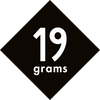Ethiopia Travel Report, November 2011, Part 1 - by Sascha
Wow. For me it is the first time in Ethiopia and I am deeply impressed. The country is incredible and overwhelming with its cultures, its people, the landscapes and of course its excellent coffee qualities, which we were on the trail of on our trip.
Day 1, November 15, 2011
The beginning of our journey brings us to the largest Dry Mill and Coffee Processing Station in Addis. Here, coffees arrive from all regions of the country. They are delivered in bags, with the green coffee still in the parchment, or parchment skin. The work in the Dry Mill is divided into several process steps. After delivery, the coffees to be processed are still temporarily stored in large silos. First, the moisture content is checked. It must not exceed 11%. Stored green coffees have the risk of fungus and mold growth at higher moisture contents. In addition, there are of course weight differences, which would make a big difference at our very high green coffee trade prices today.

The ECX was launched in 2008 and since then it has been discussed very controversially, especially in the coffee world. The pros are clearly a uniform grading system and a standardization of coffee qualities with more transparency in prices for buyers and sellers, importers and exporters. The biggest con, of course, weighs heavily for the specialty coffee community. Coffees sold through the exchange are never traceable and originate from a uniformly graded coffee of one region. Micro lots or farm origins are impossible to get this way. The details get lost in the standardization process, so to speak. In my eyes, the ECX moves Ethiopian coffee production and average coffee quality forward. Transparency in payment flows is good and important in the direction of farmers and of course in our direction as well.
In this way Ethiopia becomes a safe partner.
Costa Rica took a similar step in the 1980s when it banned the cultivation of Robusta coffee. The main reason for this was the loss of quality caused by mixing two types of coffee that do not belong together in the preparation process. Standardization was also carried out, which subsequently advanced Costa Rica as a country that stands for specialty coffee and quality. Although I personally do not agree with the ban on Robusta that still exists today, I do believe that it was the right move for the country at the appropriate time. Back to ECX. So, coffee producers and cooperatives that have tendered their coffee to the exchange own certain quotas that have been quantitatively and qualitatively determined and "graded" beforehand. At the ECX, these are sold by auction. On the trading floor, buyers/exporters (dressed in brown) and producers (dressed in green) meet to auction defined regions and qualities, for example a "WSDA Grade 2".
Since the physical coffee is already in the contingent of the exchange, it is really "only" about quantities and price discussions. Negotiations are conducted with extravagant gestures and appropriate volume. Until buyer and seller agree and shake hands. Large displays with the current prices of the New York Coffee Exchange, prices of coffees already traded and those of the previous day serve as orientation.
... to be continued




